Olive-Backed Sunbird
- December 8, 2023
- 1 comment
Olive-Backed Sunbirds (Cinnyris jugularis) are adorned with stunning, iridescent colors during the breeding season, showcasing vibrant shades of green, blue, and purple. This serves both as a visual spectacle for observers and as a means to attract potential mates.
Physical Appearance of Olive-Backed Sunbird
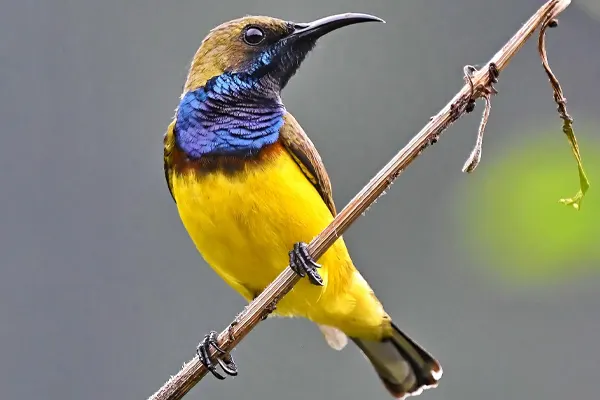
Olive-Backed Sunbird
- Lifespan: 5 to 7 years
- Habitat: Gardens, Forests, and Coastal areas. Urban and Rural environments.
- Diet: Nectar from Flowers, Supplemented by Insects and Spiders.
- Size: 10 to 15 cm
- Weight: 5 to 15 grams
- Wingspan: 15 to 25 cm
- Conservation Status: Least Concern.
- Population Trend: The population trend of Olive-Backed Sunbirds is relatively stable, with no significant declines reported. However, localized threats such as habitat loss can impact specific populations.
These sunbirds exhibit remarkable flight skills, including the ability to hover in mid-air while feeding on nectar. Their flight resembles that of hummingbirds, showcasing their agility and adaptability in capturing elusive floral resources.
Feather Coloration of Olive-Backed Sunbird
Males boast a dazzling and iridescent display of colors, especially during the breeding season. The upperparts of the male’s plumage showcase a vibrant combination of metallic greens, blues, and purples, creating a striking and eye-catching appearance. This radiant coloring is particularly pronounced on the back and upper tail, adding to the male’s allure during courtship displays.

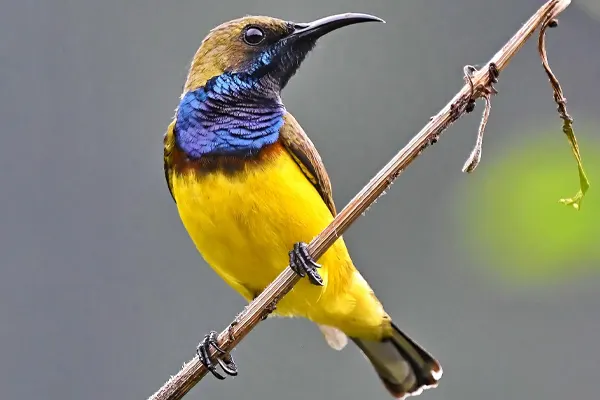
In stark contrast, females display a more subdued and cryptic color palette. Their overall plumage is characterized by olive-brown hues, providing effective camouflage amidst vegetation. The undersides of females often have a yellowish tint, contributing to their inconspicuous appearance. This subdued coloring is an adaptation for nesting and protecting their young, minimizing the risk of attracting predators.
Flight Characteristics of Olive-Backed Sunbird
One of the most remarkable flight abilities of the Olive-Backed Sunbird is its capability to hover in mid-air, reminiscent of hummingbirds. This agile hovering is particularly evident when the sunbird is feeding on nectar from flowers. The ability to remain stationary in flight allows for precise positioning and extraction of nectar from blossoms.
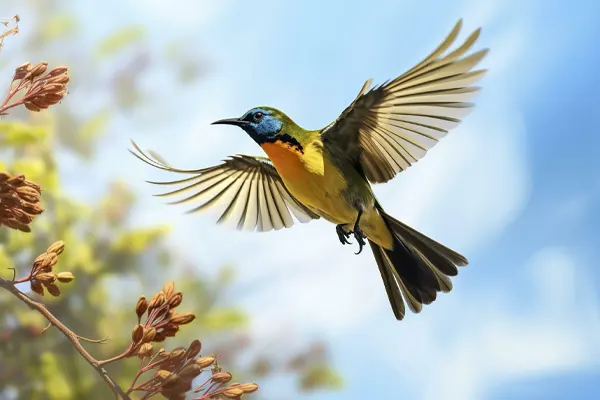
- Rapid Wing Beats: Olive-Backed Sunbirds are characterized by rapid and energetic wing beats during flight. These swift movements enable them to navigate through dense vegetation with ease and contribute to their proficiency in capturing elusive prey, such as insects and spiders.
- Aerial Acrobatics during Courtship: During the breeding season, male Olive-Backed Sunbirds engage in elaborate courtship displays that involve impressive aerial acrobatics. These displays showcase not only the vibrancy of their plumage but also their agility in executing intricate flight patterns. The aerial performances serve as a visual spectacle to attract potential mates.
- Precision in Foraging Flights: When foraging for food, Olive-Backed Sunbirds demonstrate precision in their flight patterns. Their agility allows them to navigate through complex environments, such as the intricate foliage of trees and shrubs, as they search for nectar-rich flowers and small arthropods.
- Adaptation to Urban Landscapes: Olive-Backed Sunbirds display adaptability to urban landscapes, where they can be observed navigating through gardens and parks. Their flight characteristics make them well-suited to exploit diverse habitats, showcasing their ability to coexist with human-altered environments.
- Territorial Flight Patterns: The sunbird exhibits territorial behavior during the breeding season, marked by specific flight patterns. Males may engage in aerial displays within their territory, using flight as a means of communication to assert dominance and ward off potential rivals.
- Energy-Efficient Soaring: While their primary mode of flight involves rapid wing beats, Olive-Backed Sunbirds are also known to utilize energy-efficient soaring and gliding techniques. This conservation of energy is particularly important for their survival, allowing for extended periods of flight while searching for resources.
Migration Patterns of Olive-Backed Sunbird
As a general rule, Olive-Backed Sunbirds are known for their non-migratory behavior. They tend to stay within their established territories, comprising a range of habitats such as gardens, forests, and coastal areas. While non-migratory in the traditional sense, some populations may undertake localized movements in response to changes in resource availability. This could include seasonal fluctuations in the abundance of flowering plants and the availability of insect prey.


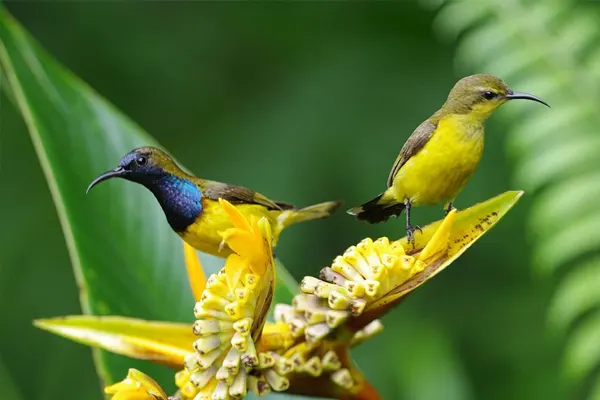
It’s important to note that the migratory behavior of the Olive-Backed Sunbird is not as pronounced as in some other bird species. Their ability to thrive in a variety of habitats and their non-reliance on specific migratory routes or destinations contribute to their adaptability and success in their ecological niche. Further research is needed to understand the intricacies of their movements and to what extent localized patterns contribute to their overall population dynamics.
Habitat & Distribution of Olive-Backed Sunbird
- Diverse Ecosystems: Olive-backed Sunbirds are highly adaptable and can be found in a variety of habitats, ranging from mangroves and coastal areas to urban gardens and rainforests.
- Forest Edges: They are commonly found along the edges of forests, where there is a mix of open spaces and vegetation.
- Gardens and Parks: In urban areas, these sunbirds are often seen in gardens, parks, and flowering shrubs, where they feed on nectar from flowers.
- Mangroves and Coastal Areas: They are also known to inhabit mangrove areas and coastal regions, especially where flowering plants are abundant.
- Altitudinal Range: Olive-backed Sunbirds can be found at various altitudes, from sea level up to higher elevations in mountainous regions.
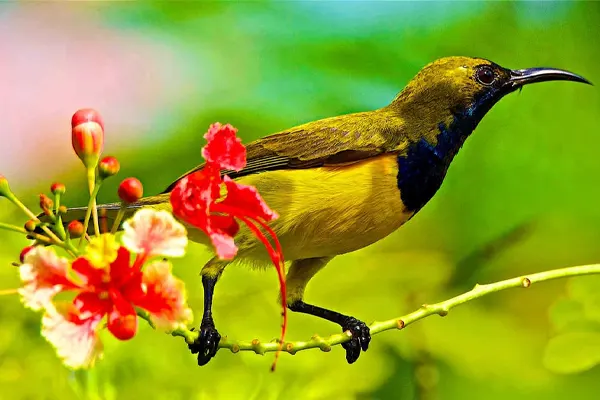
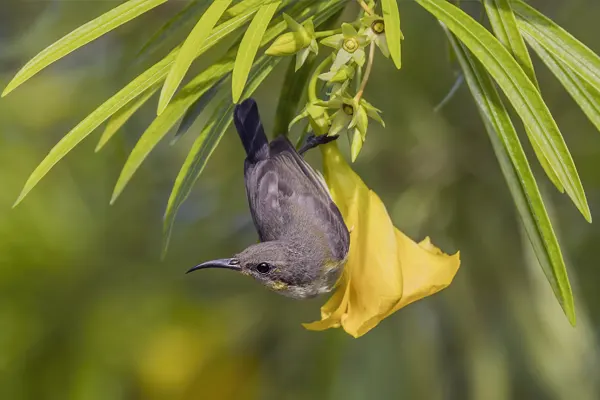
- Southeast Asia: The Olive-backed Sunbird has a widespread distribution in Southeast Asia, including countries such as Thailand, Malaysia, Indonesia, Vietnam, and the Philippines.
- Northern Australia: It is also found in the northern parts of Australia, particularly in Queensland and the Northern Territory.
- Pacific Islands: The distribution of the Olive-backed Sunbird extends to some Pacific islands, where they inhabit suitable habitats.
- Islands and Archipelagos: They are known to populate various islands and island archipelagos within their range.
Behavioral Traits of Olive-Backed Sunbird
The behavioral traits of the Olive-backed Sunbird reflect their adaptation to a nectar-based diet, their elaborate nesting practices, territorial tendencies, and their ability to navigate various environments with agile flight. Their behaviors are also influenced by the seasonal demands of breeding and the quest for food resources.
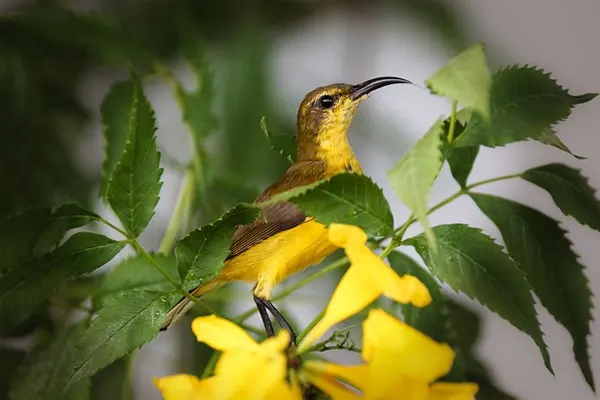

- Feeding Behavior: Olive-backed Sunbirds are primarily nectarivorous, feeding on the nectar of flowers. Their long, slender bills and specialized tongues are adapted for extracting nectar from a variety of floral sources.
- Hovering: They are skilled at hovering in front of flowers while feeding, using their agile flight and strong wings to maintain a stable position.
- Insectivorous Behavior: While nectar is a major component of their diet, Olive-backed Sunbirds also feed on insects and spiders. This is particularly notable during the breeding season when they require additional protein to feed their chicks.
Role in Ecosystem of Olive-Backed Sunbird
As a nectarivorous bird, the Olive-backed Sunbird plays a crucial role in pollination. While feeding on nectar, their heads come into contact with the reproductive parts of flowers, transferring pollen from one flower to another. This process enhances the reproduction of flowering plants and contributes to the overall biodiversity of the ecosystem.

- Accidental Seed Disperser: By consuming nectar, the sunbird may inadvertently pick up seeds from the flowers on its bill or feathers. As it moves from one location to another, these seeds can be dispersed, aiding in the propagation of plant species. This unintentional seed dispersal contributes to the regeneration of plant populations.
- Insectivorous Behavior: The Olive-backed Sunbird helps control insect populations by including insects and spiders in its diet. This insectivorous behavior can have localized effects on the abundance of arthropods in the ecosystem, contributing to pest control in the areas where the sunbirds forage.
- Maintaining Floral Diversity: Through their role in pollination, Olive-backed Sunbirds contribute to the diversity of flowering plants in their habitat. This, in turn, supports a wide array of other organisms that depend on these plants for food and shelter.
Dietary Habits of Olive-Backed Sunbird
The dietary habits of the Olive-backed Sunbird are characterized by its specialization in nectar feeding, supplemented by an insectivorous component. This dual feeding strategy allows them to obtain the energy-rich nectar they need while also meeting their protein requirements, especially during critical periods such as breeding.

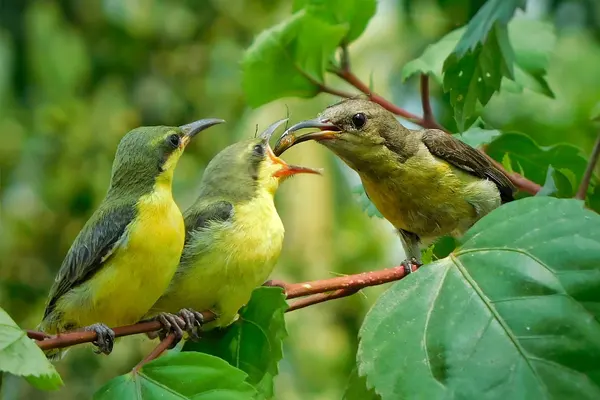
- Primary Diet: Nectar is the primary component of the Olive-backed Sunbird’s diet. Its long, slender bill and specialized tongue are adapted for extracting nectar from a variety of flowers.
- Wide Range of Flowers: These sunbirds feed on a wide variety of flowering plants, and their diet may vary based on the availability of different floral resources in their habitat.
- Tube-Like Flowers: They are particularly adapted to feed from tube-like flowers, where they can insert their long bills to reach the nectar.
- Supplemental Protein: While nectar forms a significant part of their diet, Olive-backed Sunbirds are also insectivorous. They feed on small insects and spiders, especially during the breeding season and when additional protein is needed, such as for feeding their chicks.
Interesting Facts of Olive-Backed Sunbird
The Olive-backed Sunbird’s breeding season coloration, melodious calls, hovering flight, nest-building behavior, adaptability to urban environments, and broad geographical distribution make it a fascinating and adaptable bird species with unique features.
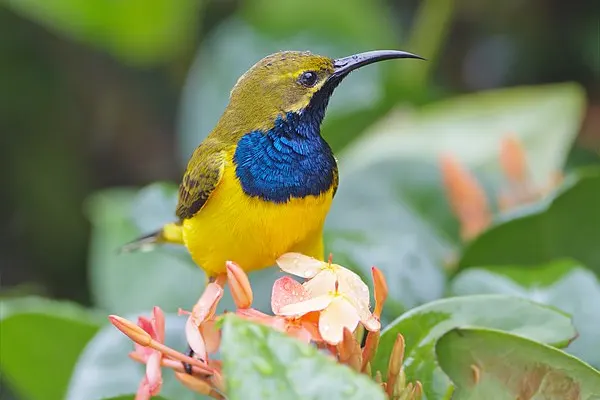
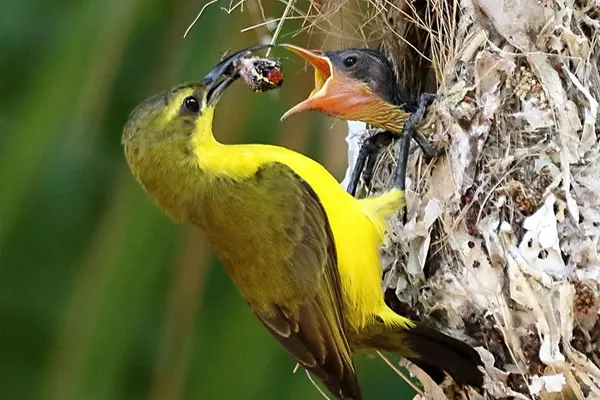
- Male’s Vibrant Colors: During the breeding season, the male Olive-backed Sunbird undergoes a remarkable transformation. Its plumage, particularly the iridescent colors on its back, intensifies, becoming more vibrant. This change is a visual display aimed at attracting potential mates.
- High-Pitched Calls: Olive-backed Sunbirds are known for their high-pitched and melodious calls. These calls serve various purposes, including communication within their social groups, signaling territory boundaries, and playing a role in courtship displays during the breeding season.
- True Hovering Flight: Olive-backed Sunbirds are among the few bird species capable of true hovering flight. Their agile flight and strong wings enable them to hover in front of flowers while feeding on nectar. This unique ability sets them apart from many other bird species and showcases their adaptability to their nectar-rich foraging habitats.
Nesting Habits of Olive-Backed Sunbird
The nesting habits of the Olive-backed Sunbird showcase a remarkable combination of skill and adaptability. The intricate design of the nests, coupled with the collaborative efforts of both male and female in caring for the offspring, contributes to the reproductive success of this species.
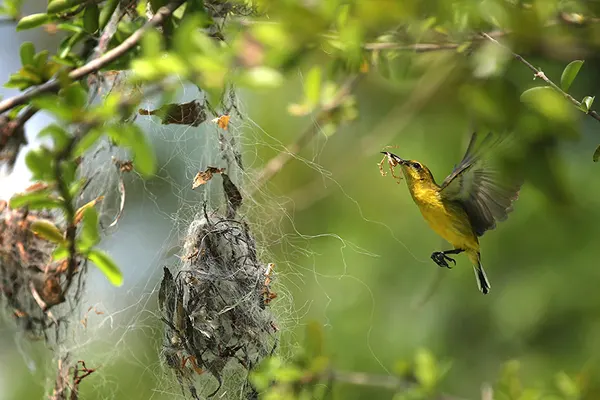
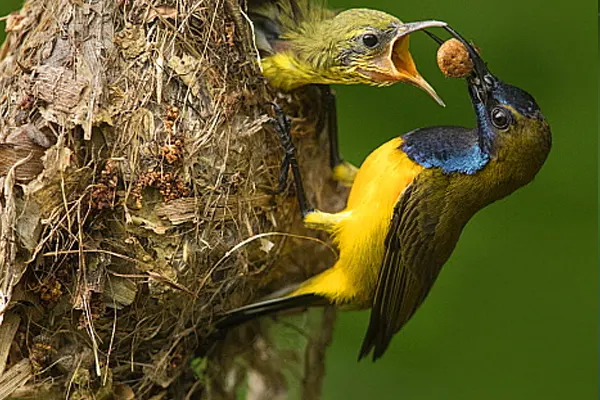
- Pendulous Structures: Female Olive-backed Sunbirds are responsible for building the nests. These nests are distinctive, pendulous structures that hang from the branches of trees or shrubs.
- Materials Used: The construction involves the use of various materials, including spider silk, plant fibers, feathers, and other small particles. Spider silk is particularly important for providing strength and elasticity to the nest.
- Protected Sites: Nests are often situated in locations that offer protection from predators and the elements. Common sites include the outer branches of trees, where the nest is less accessible to ground-dwelling predators.
- Distinctive Design: The nests of Olive-backed Sunbirds have a distinctive purse-like or hanging basket shape. This design not only provides a secure space for the eggs and chicks but also helps deter potential predators.
- Small and Compact: The nests are relatively small and compact, reflecting the size of the bird. The female carefully weaves and shapes the nest to create a snug and secure environment for incubating eggs and raising chicks.
Calls & Vocalizations of Olive-Backed Sunbird
Olive-backed Sunbirds emit high-pitched and distinctive calls that are characteristic of their species. These calls are often melodious and can vary in pitch and intensity. Vocalizations serve as a means of communication within social groups. Individuals use different types of calls to convey information about the presence of predators, the location of food sources, and other aspects of their environment.
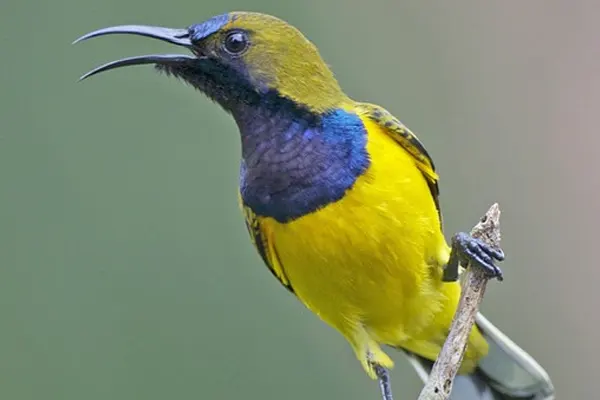
- Territorial Calls: Males are particularly vocal when establishing and defending their territories, especially during the breeding season. These territorial calls signal to other males that the area is already claimed.
- Courtship Displays: Vocalizations play a significant role in courtship displays during the breeding season. Males may engage in elaborate singing and calling to attract females, showcasing their fitness and desirability as mates.
- Alarm Calls: When threatened or in the presence of potential dangers, Olive-backed Sunbirds emit alarm calls. These calls serve to warn other members of their group about the presence of predators, allowing them to take evasive action.
- Chick-Feeding Calls: Adult sunbirds use specific calls while feeding their chicks. These calls may serve to attract the attention of the chicks and signal that food is available.
Ecological Significance of Olive-Backed Sunbird
The Olive-backed Sunbird’s ecological significance extends from its role in pollination and seed dispersal to its influence on trophic dynamics and potential as an indicator species. Its presence contributes to the overall health and biodiversity of the ecosystems it inhabits.

- Pollination Services: As a nectarivorous bird, the Olive-backed Sunbird plays a crucial role in pollination. While feeding on nectar, the bird’s head comes into contact with the reproductive parts of flowers, facilitating the transfer of pollen. This process is essential for the reproduction of many flowering plants, contributing to the maintenance of plant biodiversity.
- Seed Dispersal: The sunbird inadvertently aids in seed dispersal. Seeds can stick to the bird’s bill or feathers while it feeds on nectar. As the bird moves from one location to another, it helps disperse seeds, contributing to the regeneration and dispersal of plant species within its habitat.
- Biodiversity Support: The Olive-backed Sunbird’s foraging habits and role in pollination contribute to the overall biodiversity of its habitat. By interacting with a diverse range of flowering plants, the bird supports a variety of other organisms that depend on these plants for food and shelter.
- Insect Control: The insectivorous behavior of the sunbird helps control insect populations. By consuming insects and spiders, especially during the breeding season, the bird contributes to the regulation of arthropod populations in its environment, potentially aiding in pest control.
Conservation Status of Olive-Backed Sunbird
The Olive-backed Sunbird (Cinnyris jugularis) is generally considered to be of least concern. The International Union for Conservation of Nature (IUCN) assesses species and assigns them to different categories based on their population status, trends, and potential threats. The least concern category indicates that the species is not currently facing a high risk of extinction. However, it’s important to note that conservation statuses can change over time as new information becomes available and as the result of ongoing research and monitoring efforts. Factors that can impact the conservation status of a species include habitat loss, climate change, pollution, and other human-induced pressures.

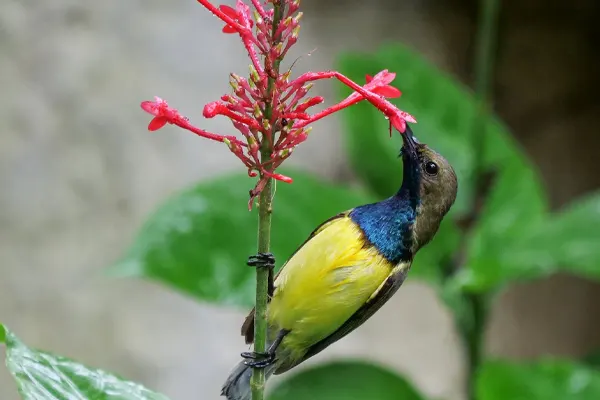
To obtain the most current and accurate information about the conservation status of the Olive-backed Sunbird, I recommend checking with the IUCN Red List of Threatened Species or other reputable conservation organizations. These sources provide up-to-date assessments and information on the status and threats facing various species, including birds like the Olive-backed Sunbird.
Research and Ongoing Studies of Olive-Backed Sunbird
The Olive-backed Sunbird, you may want to check recent scientific literature, academic journals, or contact relevant research institutions, ornithological societies, or conservation organizations that focus on avian research. Researchers often publish their findings in peer-reviewed journals, and these publications provide valuable insights into the current state of knowledge about the species.
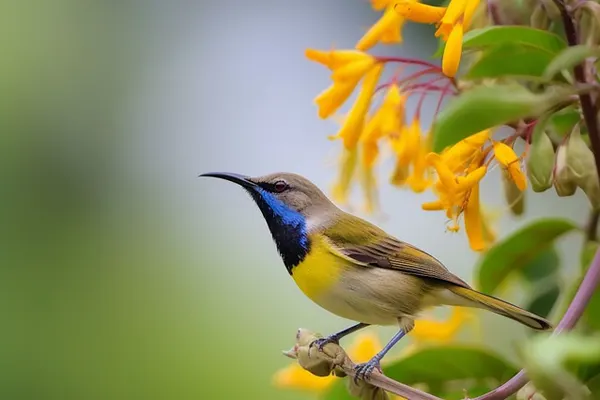
- Breeding Ecology:
- Investigations into nesting habits, reproductive success, and parental care behaviors.
- Understanding the factors influencing mate choice and courtship displays.
- Ecology and Habitat Use:
- Studies on habitat preferences, including the bird’s adaptability to urban environments.
- Assessing the impact of habitat changes on population dynamics.
- Feeding Behavior and Diet:
- Research on foraging behavior, nectar preferences, and the nutritional aspects of their diet.
- Investigations into the role of sunbirds in pollination and seed dispersal.
- Physiology and Adaptations:
- Studies on the physiological adaptations that enable hovering flight.
- Research on the bird’s responses to environmental stressors and climate change.
- Population Dynamics:
- Assessments of population trends, distribution, and abundance.
- Monitoring the impact of human activities on local populations.
- Conservation Genetics:
- Genetic studies to understand population structure and connectivity.
- Assessing genetic diversity and potential implications for the species’ long-term survival.
Educational and Ecotourism Opportunities
The Olive-backed Sunbird (Cinnyris jugularis) offers educational and ecotourism opportunities, contributing to both public awareness and appreciation of biodiversity. Combining educational efforts with ecotourism initiatives, the Olive-backed Sunbird can serve as a flagship species, drawing attention to broader conservation issues and promoting sustainable practices that benefit both wildlife and local communities.
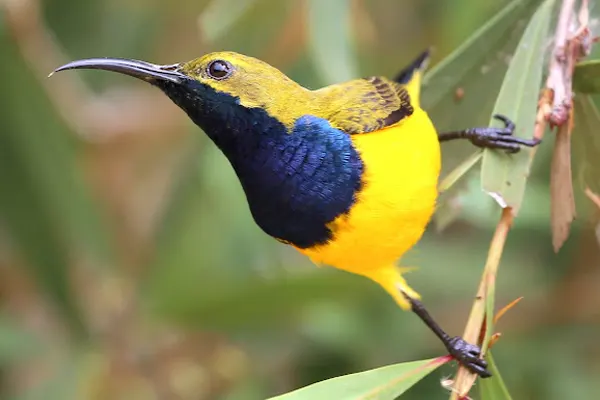
- Biodiversity Education: The vibrant colors, unique behaviors, and ecological role of the Olive-backed Sunbird make it an excellent subject for educational programs. Schools, nature centers, and environmental organizations can incorporate the bird into educational materials to teach students about biodiversity and the importance of preserving natural habitats.
- Citizen Science Initiatives: Involving the public in monitoring and data collection can be a valuable educational tool. Citizen science initiatives focused on observing and recording Olive-backed Sunbird sightings contribute to scientific understanding while educating participants about bird behavior and conservation.
- Birdwatching Tours: The Olive-backed Sunbird’s vibrant colors and unique behaviors make it an attractive species for birdwatchers. Organizing birdwatching tours in locations where these sunbirds are found can attract ecotourists interested in observing and photographing these beautiful birds.
- Guided Nature Walks: Nature guides can lead educational walks focusing on local birdlife, including the Olive-backed Sunbird. These walks provide participants with the opportunity to learn about the bird’s ecology, behavior, and the broader ecosystem it inhabits.
- Photography Tours: Given the striking colors of the male Olive-backed Sunbird, photography tours can be organized for enthusiasts looking to capture images of these birds in their natural habitats. This not only supports ecotourism but also promotes appreciation for the aesthetic value of wildlife.
- Educational Centers and Nature Reserves: Establishing educational centers or interpretive displays at nature reserves can provide visitors with information about the Olive-backed Sunbird and the ecosystems they inhabit. Interpretive materials can enhance the overall visitor experience and foster a deeper understanding of local biodiversity.
Conclusion
The Olive-backed Sunbird (Cinnyris jugularis) is a fascinating bird with a range of characteristics that contribute to its ecological importance and appeal in educational and ecotourism contexts. Its vibrant colors, intricate nesting habits, and unique behaviors make it a subject of interest for researchers, educators, and nature enthusiasts alike.
From an ecological perspective, the Olive-backed Sunbird plays a vital role in pollination and seed dispersal, contributing to the health and diversity of the ecosystems it inhabits. Its adaptability to urban environments underscores its resilience in the face of habitat changes.
In educational settings, the bird offers valuable opportunities for teaching about biodiversity, avian ecology, and the interconnectedness of species within ecosystems. Citizen science initiatives focused on observing and recording Olive-backed Sunbird behaviors engage the public in scientific endeavors while fostering a sense of environmental stewardship.


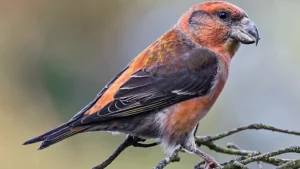
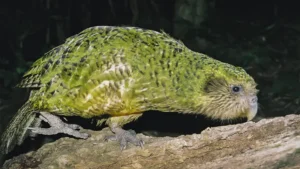
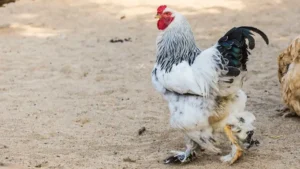

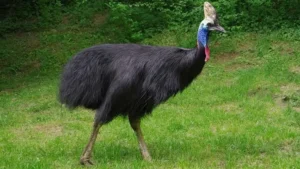





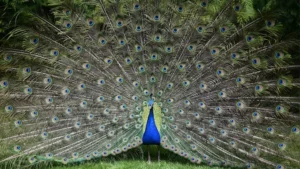
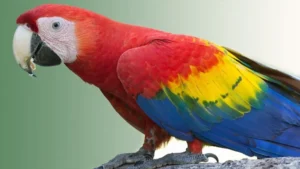
Hi, A pairs of sunbird recently built a nest in my garden and hatch 2 batch of baby birds The first time batch the 1 single baby bird was killed by cat when learning how to fly. The second batch , all 3 baby birds was killed by cat when the cat attack their nest, the next was torn down and trample by the cat. I bought a man made nest hoping to attract them back and place a nectar feeder near their nest, somehow they have not gone near the nectar feeder, would you know what is the mixture formula and how to attract the sunbird to the nectar feeder? We can still hear them nearby.
Kenny
April 29, 2024 4:33 am